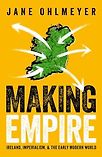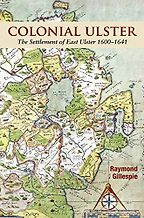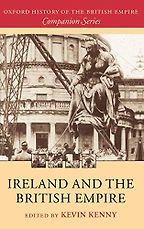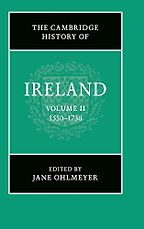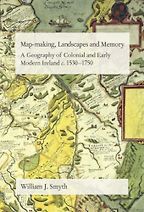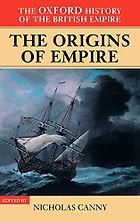Why is it helpful or worthwhile, as a historian, to study the colonial history of Ireland? Is it paradigmatic of wider forms of colonialism?
I think it’s interesting to study Ireland as a colony in and of itself to help understand why Ireland is the way it is today. We’re living, in Ireland, with the consequences of what happened from the 12th century onward, so there’s an immediate relevance in terms of Ireland today and how that plays out in terms of Ireland’s relationship with Great Britain.
Then, there’s this wider paradigm. If you can understand what happens in Ireland, we can better understand what’s happening in other post-colonial societies. Look at what’s going on in the Middle East. Look at what’s going on in India, Pakistan, and Bangladesh.
In other words, it gives us insight into how colonies have operated and how post-colonial worlds have operated. I would also argue, and I argue in my book, that Ireland is very much a laboratory for empire. From the late 16th century until the 20th century, Ireland was where policies were formulated that were later exported around the British Empire. It’s also where people were trained in the business of empire. People from Ireland and people from Scotland, Wales, and England were sent to Ireland to cut their teeth before they were then dispatched to India, Africa, and the Middle East.
Ireland is interesting from multiple perspectives in terms of better understanding how empire—especially the British Empire—operated. When we start to look at Ireland, it complicates the story of colonisation and imperialism. This allows us to better understand the operation of empire—not the nostalgia around it.
Let’s move on to the books. I’m going to take them in the order that you sent them to me. The first one is The Oxford History of the British Empire, Volume I: The Origins of Empire. Why is this important and how does Ireland fit into this volume?
Historians of Ireland have been very reluctant to engage with this wider dialogue of Ireland and the British Empire. That began to change in 1998 with the publication of The Oxford History of the British Empire, which was edited by Nicholas Canny.
Nicholas Canny is best known for the work he has done on Ireland in the Atlantic world, but it’s always a story of Irish migration rather than a story of empire. This volume firmly locates Ireland as part of an imperial process. A number of essays focus specifically on Ireland in relationship to the English Empire, as it was in its early incarnation, and then, the British Empire from the late 18th century. It’s pioneering in that sense.
One reason why historians of Ireland have been reluctant to engage is that the Troubles in Northern Ireland have complicated our ability to discuss colonialism. It became so politicised, particularly by right-wing nationalists associated with the IRA using a colonial narrative to justify what was going on. Remember, their targets were anyone associated with empire, starting with Mountbatten and moving on, so we need to separate that out. It’s only really from the late 1990s that historians of Ireland have engaged.
For me, it’s not about propaganda and it’s not about polemics. It’s about looking at the process of empire. Canny’s book was a very important milestone in that discussion.
Let’s move on to the next one—Raymond Gillespie’s Colonial Ulster: The Settlement of East Ulster, 1600–1641. Tell us about this. I’m particularly interested in the dates. Does everything from 1600 lead to the rebellion of 1641?
Rebellions are one way of responding to empire. The most significant response in early modern Irish history was this rebellion of 1641, when Ireland secured a decade of independence from English rule. Cromwell put an end to that when he invaded Ireland in 1649.
What’s important about Raymond Gillespie’s book is referenced in the title—the acknowledgement that Ireland, and particularly Ulster, was very much a colony, and that what we’re looking at is a colonial society that was planted by tens of thousands of colonists from England, Scotland, and Wales. After 1600, it’s Scotland, as well as English and Welsh settlers, because King James VI and I was King of Scotland before he became King of Great Britain.
Gillespie’s work is important because it focuses on the unofficial plantation of Ulster. You have the official plantation of Ulster, which was on the lands confiscated from the great Hugh O’Neill, Earl of Tyrone, and those Ulster lords who left Ireland in 1607, in something called the Flight of the Earls.
He also looks in great detail at Counties Antrim and Down, which were informally colonised and planted both by Catholics from Scotland—the MacDonnells of Antrim—and Protestants from the lowlands—the Montgomerys and the Hamiltons—who created a ‘mini-Pale’, for want of a better expression, in East Ulster.
It looks at different types of colonisation: in other words, top-down colonisation, sponsored very much by the Crown; and also, bottom-up colonisation, which is much more organic and includes Catholics as well as Protestants. When we think of colonisation and plantation in East Ulster it’s a mixed enterprise.
This was a pioneering book and it’s as much a work of social history as it is of political history. To my mind, that’s what makes it so important.
I’m aware that James VI and I settled Ulster. But was the settlement continuing throughout the reign of Charles I as well? Was it a constant process throughout that first half of the 17th century?
It was. The plantations in Ireland began in earnest with the Munster plantation during the 1580s. Ulster became the focus in the early decades of the 17th century, but it’s not only Ulster; it’s happening across the country. These plantations continue right through to 1641.
1641 was the middle of the Crisis of the Three Kingdoms, so it was the advent of the English Civil War as well. Was the rebellion in Ireland very much directed against the settlement? Was that the central grievance that the native Irish had at that time, or were others more significant?
There were multiple grievances, but one of the long-term causes of the 1641 rebellion was the plantations and expropriation. Something like 8 million acres of land was confiscated and redistributed mostly, but not exclusively, to Protestant colonists. That was a major grievance for the indigenous Gaelic-speaking population.
There were other factors that contributed to the outbreak of rebellion in 1641. One was that they were responding to an era of conspicuous consumption that the plantation introduced into Ireland, particularly into Ulster. Hand in hand with colonisation went the commercialisation of Ireland: the need to use an economy that was based on money rather than barter and exchange; the need to adopt English fashions—not just the clothing but housing, English culture, English law, English tenurial practices, and English agricultural practices.
We see this intense phase of anglicisation occurring, and it often cost money. People became very deeply indebted because they were building fancy new houses, and they were sending their children on grand tours or to be educated in England. The native elite, especially, were up to their tonsils in debt. When you’re up to your tonsils in debt, one way of getting around it is rising in rebellion and destroying evidence of that debt. That happens in 1641.
Another thing to bear in mind is that the 1630s were amongst the most challenging years from the perspective of climate. We see a series of harvest crises and famines. We also see extreme cold weather, and this exacerbates the deeper economic crisis.
“Rebellions are one way of responding to empire”
On top of that, you’ve got religion. The majority population is Catholic, but there is constant pressure for Catholics to convert to Protestantism. Religion is a very inflammatory element of this. There is the desire, on the part of the indigenous population, to retain Catholicism and not convert to Protestantism.
To cap it all, you’ve got a very heavy-handed viceroy, a man called Lord Deputy Wentworth who is out to screw Ireland and to make as much money for the king (and himself) on the back of Ireland—again, this expropriation—and he manages to alienate everybody as well. It’s a combination of factors, long-term and shorter term ones.
Trinity College has an amazing archive called the 1641 Depositions that captures the complexity of the origins of the uprising in a remarkable way, so historians can understand these responses to intense colonisation and anglicisation, and how the rebellion expressed not only a desire to be Catholic and to have political independence, very much within the context of the three Stuart kingdoms, but also to be free of the trappings of anglicisation that the indigenous population felt had been foisted on them.
Wentworth wasn’t too popular in England either, was he?
No, he wasn’t. It’s part of that Three Kingdoms story as well. What happened in Ireland triggered big problems in England, and Wentworth’s was the first head to roll in the Civil War.
Let’s move on to Kevin Kenny’s Ireland and the British Empire. Tell us about this book.
This was published in 2004 and it’s very much a follow-on from Nicholas Canny’s volume in The Oxford History of the British Empire. In the Canny volume, there are three or four essays that relate to Ireland, whereas this whole book looks at Ireland. What this book does so deftly is put Ireland at the heart of discussions around British imperialism, and it goes right through to the present.
In my book, Making Empire (2023), I look primarily at the early modern period. But in one chapter I go right through to the 19th century, as the Kenny book does, because I think it’s important to look at continuities over centuries. You can see how ideas, ideologies, and policies are worked out in Ireland and then exported around the empire.
That’s something that the essays in Ireland and the British Empire tease out. We can see the footprint of Ireland across the British Empire. Two-thirds of the British Army in India were Irish squaddies. In the 1890s, there were eight provinces in India, seven of which were governed by men from Ireland—albeit Anglo-Irishmen, but nevertheless, men who saw the world through the prism of Ireland.
The Irish are servants of the British Empire, but they’re also subversives within it. You see that very clearly after 1916, but that conversation begins in the 1890s with the constitutional nationalists (Home Rulers in India and in Ireland talking to each other, for example). It gathers momentum in the 1920s as the Irish teach the Indian freedom fighters their ABCs of freedom fighting. They work very closely not only with Indian freedom fighters, but with freedom fighters across the British Empire. Again, the Kenny book captures this.
Next up, which you edited, is The Cambridge History of Ireland Volume 2: Early Modern Ireland, 1550-1730. Tell us why this is an important addition to the story.
If you want to get good insights into the latest scholarship on colonial Ireland, this is the place to start. This is really where you would go if you want to understand the political, social, and economic history of early modern Ireland. There’s also a very good chapter on the environment. The volume presents cutting-edge research in a very accessible way and makes the history of colonial Ireland very accessible, particularly to undergraduates but also to general readers.
Is there a reason for selecting these dates or is that imposed by other volumes in the series? 1730 is bang in the middle of the Protestant Ascendancy, but does something happen?
We did that on purpose because we were trying to disrupt traditional narratives. Whether we succeeded or not is another matter. That Irish story should have begun, some reviewers would say, in the 1530s with the onset of the Protestant Reformation, and it should have gone right through to, say, 1800, or it should have stopped in 1690. We want people to rethink some of these key dates and say, ‘How can we look at this story slightly differently?’
Let’s move on to the final book, William Smyth’s Map-Making, Landscapes and Memory: A Geography of Colonial and Early Modern Ireland c.1530–1750.
This is one of my favourite books. Smyth is a historical geographer and I love the way that he uses maps and cartography to help tell the story of colonial Ireland. As we all know, maps are very important tools of empire. If you’re going to expropriate, you have to know what it is that you’re taking away and reallocating.
Some of the most innovative work on early modern and colonial Ireland has been done by historical geographers who work in a very interdisciplinary way. Smyth is a geographer who works with anthropologists and historians. The book was published in 2006, but he’d been working on that book the whole way through the 1990s, and he was way ahead of his time.
“Ireland is probably one of the most extensively mapped countries in the early modern world”
The other thing that is so important about this book is the way it brings in the whole discussion of memory and how we remember the early modern period, and how events that occurred in the 17th century have become part of the DNA of people living in Ireland. Whether it’s 1641 and the atrocities that allegedly occurred during that period that are remembered by the Loyalist community, or Cromwell in 1649, or if it’s the Battle of the Boyne in 1690, or the Siege of Derry, the events that occurred in this period are part of social memory. It’s only very recently that they’re passing from that—there’s a visceral reaction to it—and they’re becoming part of history, in a way.
Smyth’s book was a pioneer in encouraging us to think about the importance of memory and the value of folklore. There’s been subsequent work done by Guy Beiner and Sarah Covington, but Smith’s book was pioneering and that’s why I wanted it there.
Was mapmaking used as an instrument of imperial control in Ireland? Is that one of the things he talks about?
Yes. Ireland is probably one of the most extensively mapped countries in the early modern world. We know so much about colonial Ireland from the maps. You have very extensive maps of estates. The Raven Maps are the most beautifully illustrated maps, dating from the 1620s, of estates in Counties Antrim and Down.
The most important maps are by a man called Sir William Petty, who used chains to map Ireland. This technology is very basic in our eyes but was hugely sophisticated at the time. The levels of accuracy with which Petty was able to map Ireland is quite extraordinary. His maps became the basis of maps right through to the Ordnance Survey in the 19th century. This obsession with mapping and charting and counting is such a feature of empire. The British then replicated that in the Atlantic world and in India and Asia. It’s a feature not only of the English or British Empire; it’s also a feature of the European empires. We see the French doing exactly the same.
Many of the early mapmakers would have been killed by the indigenous Irish, so mapmaking was a risky business, certainly in the earlier period. By the mid-17th century, Ireland had been militarily conquered by the Cromwellians, so their task was slightly easier.
Finally, can you tell us about what your new book is bringing to the table, in terms of understanding colonial Ireland? What are you focusing on or trying to tell a story about?
I’m trying to tell the story of imperialism through the lens of early modern Ireland. I focus on the operation of imperialism in colonial Ireland itself.
I’m also interested in the extent to which the Irish—Catholic and Protestant indigenous Irish, as well as Anglo-Irish—become agents of empire not only in the English Empire, but in the empires of France, Spain, Portugal, and the other European powers. We find that the Irish pop up all over the early modern world. They’re very effective frontiersmen and imperialists themselves.
I’m interested in how Ireland serves as a laboratory for empire. I’ve already touched on that, and I explore that fully in the book.
Another thing I try to do in the book is to think about what empire has meant for identities in Ireland. In other words, how does it shape our senses of Irishness, of Englishness, of Britishness, and how does it complicate the story of the coloniser? What does that interaction in Ireland tell us about Britishness? It’s very interesting that in the 1641 Depositions, for example, we have people who use the word ‘British’ to describe themselves. It had been a big project of James VI and I to encourage this notion of Britishness. That’s something that continues very strongly, for example, in Northern Ireland today.
What’s even more interesting to me is how many Irish people–both Catholics and Protestants, and especially members of the elite—see themselves as English. Where does all of this then leave Irishness? In a nutshell, I’m interested in how empire impacts on identity formation.
I’m also interested in how engagement with empires shaped the landscapes of Ireland, and how it influenced what we ate. This is an era in which we’re seeing so many commodities influencing diet—sugar, especially. The other one is tobacco. As far as I can see, the whole country becomes addicted to tobacco smoking. And then, fashions. This is the era of the calico craze, where we’re seeing that everybody wants to wear the latest Indian textiles. How does that play out in an Irish context?
The final thing I’m interested in exploring is the relationship with memory. Picking up on some of the things that William Smyth and others have done, how engagement with empire has influenced popular memory or social memory in an Irish context, and how we choose to remember some things (e.g., 1641, Cromwell, the Battle of the Boyne, the Siege of Derry) that are very active in social memory but, equally, how amnesia sets in for other things. For example, very few people in Ireland have any sense of the importance of Ireland and India. As I’ve mentioned, two thirds of the British Army in India were made up of Irish Catholic squaddies. That memory has been blocked out. What’s going on here with what we remember and what we forget?
Five Books aims to keep its book recommendations and interviews up to date. If you are the interviewee and would like to update your choice of books (or even just what you say about them) please email us at [email protected]
Five Books interviews are expensive to produce. If you've enjoyed this interview, please support us by donating a small amount.

